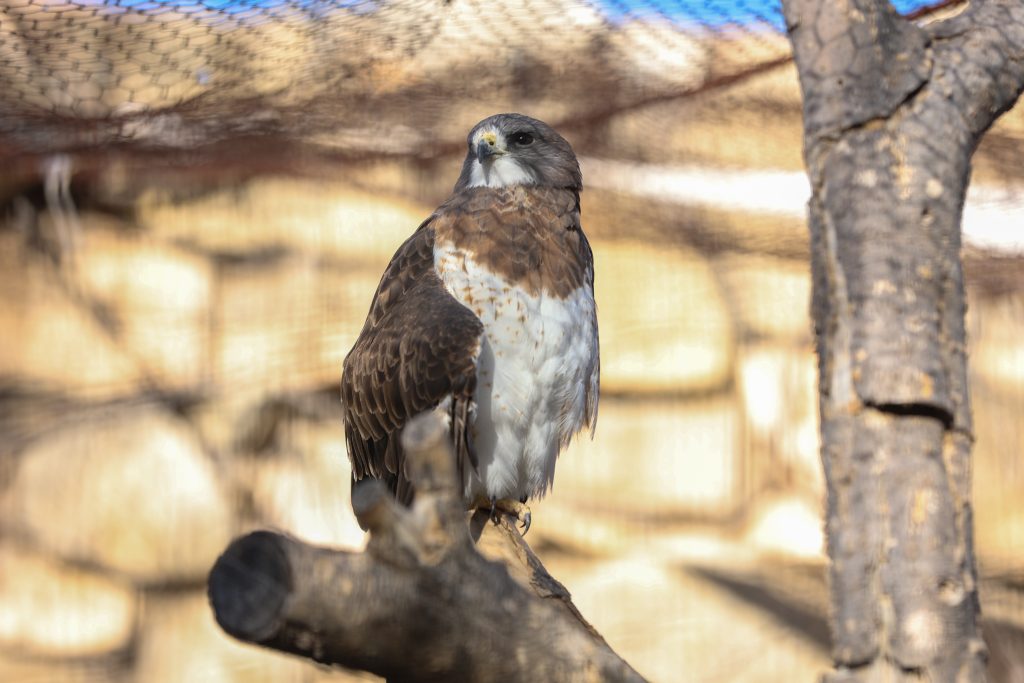Our hours for May 10, 2024: 9:00 AM-5:00 PM


The Swainson’s Hawk (Buteo swainsoni) is a remarkable bird of prey native to North America, known for its impressive migration and adaptable hunting habits. Visit our Birds of Prey exhibit to observe these elegant raptors up close. Let’s explore their diet, habitat, size, and conservation status, as well as some interesting characteristics that make the Swainson’s Hawk a true avian wonder.
Swainson’s Hawks are opportunistic feeders, with a diet that varies depending on the season and the availability of prey. They primarily feed on small mammals, such as rodents and rabbits, as well as birds, reptiles, and amphibians. During migration and breeding season, they are known to consume large numbers of insects, including grasshoppers, crickets, and dragonflies.
Swainson’s Hawks inhabit open areas, such as grasslands, prairies, and agricultural fields, throughout western and central North America. Their breeding range extends from the Great Basin and the Canadian Prairies to Texas and northern Mexico. Swainson’s Hawks are migratory birds, undertaking an incredible journey of up to 14,000 miles (22,500 km) round trip each year to spend the winter in South America.
Swainson’s Hawks are medium-sized raptors, with a wingspan ranging from 48 to 54 inches (122 to 137 cm). Their body length typically measures between 18 to 22 inches (46 to 56 cm), and they weigh between 1.3 to 3.1 pounds (0.6 to 1.4 kg). As with many birds of prey, females are generally larger and heavier than males.
The Swainson’s Hawk is currently listed as “Least Concern” on the International Union for Conservation of Nature (IUCN) Red List. However, their population has faced declines due to habitat loss, pesticide exposure, and human disturbance. Conservation efforts are in place to monitor and protect their breeding grounds and migratory routes.
During your visit to the Abilene Zoo, make sure to stop by our Birds of Prey exhibit in Elm Creek Backyard to observe the graceful Swainson’s Hawk.